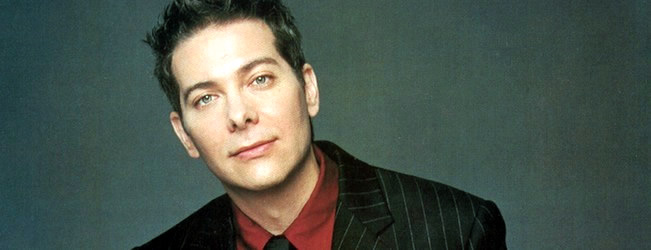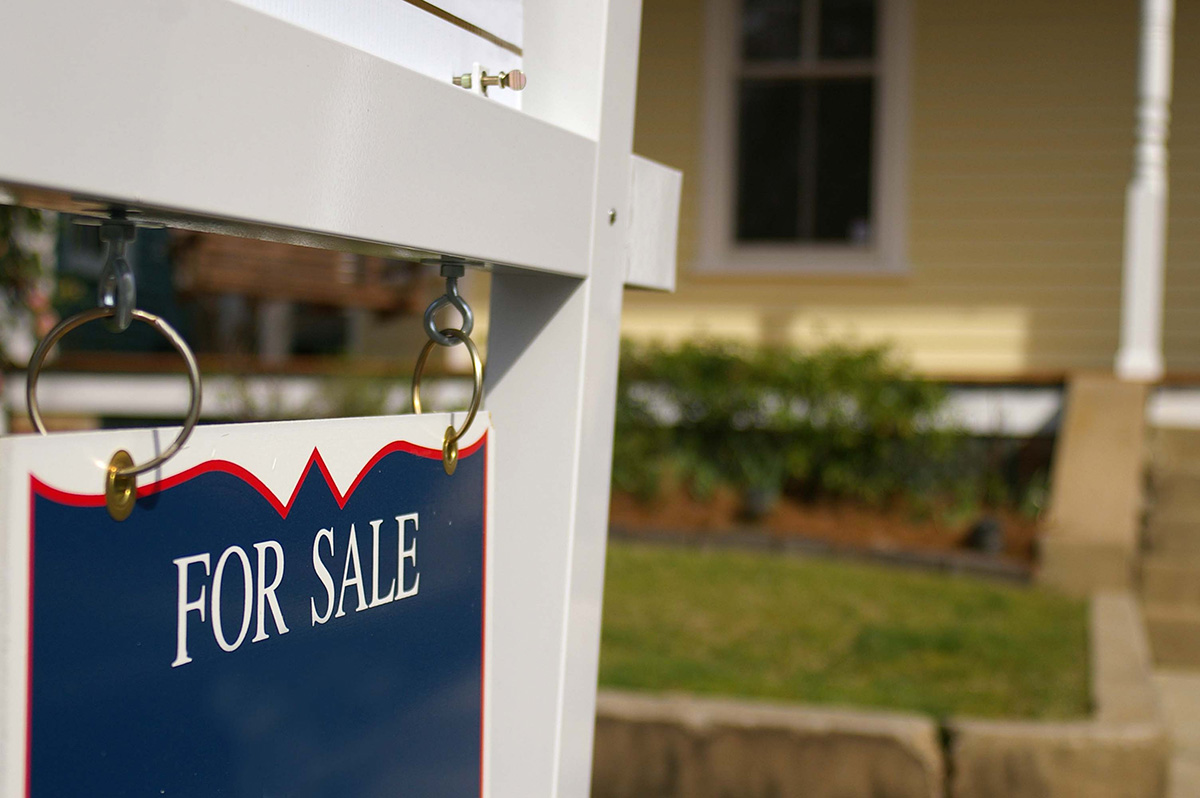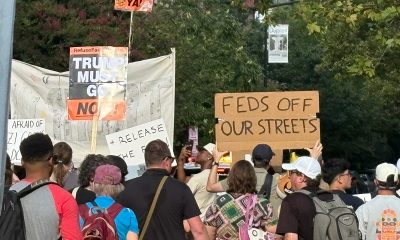Living
Curating the canon
Feinstein keeps standards alive with passion for mid-century gems

Michael Feinstein concert
7 p.m. Sunday
Kennedy Center Concert Hall
presented by the Washington Performing Arts Society
Tickets $40-$75
202-785-9727 or wpas.org
Ol’ blue eyes is back. And Feinstein’s got him.
Michael Feinstein, that is, the multi-platinum selling, five-time Grammy nominee. The cabaret-style interpreter not only of Sinatra but also Cole Porter and Irving Berlin and Richard Rodgers, the composer famous for his work with two separate lyricists, Lorenz Hart and Oscar Hammerstein III.
And a raft of others — especially the Gershwins — in the canon of Americana’s classic popular music, a genre that Feinstein himself, at a youthful 54 (still slender and boyish and with a legendary million-dollar smile) has done so much to keep alive.
He’s been called “the ambassador of the great American songbook” and married his partner Terrence Flannery in a 2008 ceremony officiated by Judge Judy (Judith Sheindlin).
And he’s back keeping the Sinatra legend alive. It started on his 2009 album “Sinatra Project.” It will continue during his Sunday night concert at the Kennedy Center Concert Hall.
“I’m doing Sinatra for sure on Sunday,” Feinstein says. “But it’s reminiscence, not a copy, because its folly to copy him.”
The show will be “very high-energy,” says Feinstein, “with new big band arrangements, a tribute to Nelson Riddle,” the longtime American arranger and bandleader who worked with Sinatra as well as Judy Garland, Peggy Lee, Rosemary Clooney and so many other vocal stars of the mid-20th century. And it will be fllled, he says, “with anecdotes about Sinatra’s life and career, which lasted from his beginnings as a swing-era idol of “bobby-soxers” in the 1940s, through his Capitol Records albums like the legendary “In The Wee Small Hours” and “Only the Lonely,” and then the master of top 40 hits, and later his Rat Pack years with Dean Martin and other Hollywood B-listers in the “Ocean’s 11” film — a tribute to his long-time base as a headliner in Las Vegas clubs until his death in 1998.
Feinstein has famously taken a classic song, “We Kiss in a Shadow,” the weepy old chestnut from Rogers and Hammerstein’s “The King and I,” where two clandestine lovers yearn “for one smiling day to be free,” and rendered the ballad of exquisite sexual longing as an appeal for same-sex marriage rights. He sings it in a duet sung, gazing into each other’s eyes — with Cheyenne Jackson, also gay, the 35-year-old heart-throb from the 2007 Broadway musical “Xanadu” and the Elvis Presley sound-alike on stage in 2005 in “All Shook Up.”
Feinstein and Jackson, also a series regular in both Fox’s “Glee” and NBC’s “30 Rock,” performed together in the show “The Power of Two,” in 2009 at Feinstein’s at Loews Regency on New York City’s swanky East Side.
Though they each have their own partners, Feinstein and Jackson elicit sparks when duetting.
At one point, during “We Kiss in a Shadow,” they turn to each other and exult, singing together “behold and believe what you see.” And audiences did. Timed for the debate in New York State over marriage equality, Feinstein and Jackson were sending a powerful message to the uber-powerful folk who saw their show, but they did it with badinage and playful patter, realizing that if you want to “send a message, call Western Union,” don’t put on a show.
In that same show, light of heart and packed with so much pizzazz, the two of them, each with matinee-idol looks and dressed dapperly in matching black suits, white shirts and black ties, the two shared the spotlight with buddy songs like “I’m Nothing Without You,” from the show “City of Angels.” But in solos Feinstein brought his own low-melting-temperature vibrato to Cole Porter’s “So In Love” from “Can Can,” and also threw in some hilarious impersonations, mimicing Paul Lynde and Carol Channing. He also sat at the piano and crooned another anthem, this one written directly to advocate for LGBT rights, Marshall Barer’s and Mickey Leonard’s “The Time Has Come,” written as a response to the Stonewall riot.
Feinstein’s roots are, of course, in cabaret, that musical genre that mixes Tin Pan Alley with Broadway show tunes and also the ambience of Weimar Republic gay-friendly precincts of Berlin’s “kabarett” in the 1920s. As Feinstein sees it, “American Idol’s” former viper-tongued wicked-witch-judge Simon Cowell, is totally wrong-headed when he habitually denounces anything he thinks sounds old-fashioned as “cabaret.”
Where did it all begin for Feinstein, this passion for the greatest American classic popular songs? In the American “middle-west” heartland of Columbus, Ohio, where he was born in 1956, the son of an amateur tap dancer (his mother) and a Sara Lee Corporation sales executive (his father). He credits his parents as “for exposing me to this music,” in a way he compares to the Suzuki method of teaching the young to play the violin by ear, “before they even know it’s music,” he says.
At age 5, he studied piano (still his instrument today) for several months with a teacher who sought in vain to get him to read sheet music and was angered when he didn’t since he was simply more comfortable playing by ear. His mother backed him up and took him out of lessons allowing him to learn to love music in his own way. By his teenage years, he says, “I had already diverged from my age group in taste.” When his sister listened to Carole King’s album “Tapestry,” he says that he was collecting 78s. As for the Beatles, he says he is not overly impressed. Ge calls “Yesterday,” for instance, “a great melody, but it’s a bad lyric, maudlin at best, a good song wasted.”
After finishing high school, he worked in local piano bars for two years and then moved to Los Angeles when he was 20. There he soon met June Levant, widow of the legendary concert pianist-actor Oscar Levant, and through her he was introduced to Ira Gershwin, who hired young Feinstein to catalogue his extensive collection of phonograph records. This assignment led to a six-year assignment working at Gershwin’s Beverly Hill home, preserving the legacy not only of Ira but also that of his composer brother George, who had died four decades earlier. From there he got to Gershwin’s next-door neighbor, singer Rosemary Clooney, with whom Feinstein formed a close relationship lasting until her death in 2002.
In 1986, Feinstein recorded his first CD, “Pure Gershwin,” followed soon by “Remember,” featuring the music of Irving Berlin” and later he embarked on his ambitious “songbook project,” where he would perform the music of a featured composer — such as Jule Styne and Jerry Herman — accompanied by the composer. Later, he would record two other albums of Gershwin’s music, “Nice Work If You Can Get It” and “Michael and George.”
“I’ve spent my life immersed in this music,” he says of all these composers and lyricists and their songs standards, “out of love for it, not even thinking about a career.” These songs are, he says, “are still pertinent to our times.” He wants “to keep the music alive for other generations,” a project that took major form in January when the Feinstein Foundation-funded $150-million Center for the Performing Arts, where he is artistic director, opened in Carmel, Ind. The complex includes a 1,600-seat concert hall plus smaller venues and houses his Foundation for the Preservation of the Great American Songbook, including also a library and archives storing his and other collections of rare recordings, orchestrations, sheet music and other cultural artifacts about songs.
Today, he is the owner of the Manhattan nightclub, Feinstein’s at the Regency, a showcase for cabaret performers, where he performs himself in sold-out shows every Christmas. He also has an interest in Feinstein’s at the Shaw, in London. Recently he completed a six-part Warner Home Video series for television that depicts the history of the American popular song through 1960. He is also finishing a book about Gershwin’s music as well as working with producer Marc Platt (“Wicked”) on a movie project about the composer’s life. And on top of all that, he directs a newly launched pop music series at Jazz at Lincoln Center in New York City, where he and his partner live (they have a second home in Los Angeles).
Next up, either this autumn or maybe early next year will be an updated version of his PBS series, “Michael Feinstein’s All American Songbook,” which aired on the network last fall. He says they are now filming three more segments which will be broadcast with the first three and linked to a new and growing website available at no charge which the show’s executive producer and historian Ken Bloom has called “the ultimate companion for the documentary” and “a guide for the 21st century.” He calls it a “goldmine” where browsers can click on any song or performer for further information, plus audio and video links to their work.
For the past two years, Feinstein himself has also sponsored through his foundation the Great American Songbook High School Academy and Competition, a master class and contest for teenagers in seven midwestern states — in events attracting hundreds of entries. The winner gets a free trip to New York City and an opportunity to sing at his nightclub there.
For Feinstein one thing is clear. This music will thrive, he says, “because it never went away.”
For more info on Feinstein and his many recordings and diverse projects, go here.
Real Estate
In real estate, trust the process
With rates coming down, we could see spring surge in buyers

The average 30-year mortgage rate is falling, little by slowly. With predictions that the rate will continue to adjust downward in the next year or two, there may be a busier spring market than we have seen in the last few year, especially for the DMV market, which has been reeling from thousands of layoffs this past year. The frenzied activity resulting from interest rates close to 3% for some borrowers will probably not occur; however, this spring could add up to be a few notches busier than the last.
What does this mean for buyers and sellers? Lender Tina Del Casale with Waterstone Mortgage says she has seen “low to mid 6’s as the average for conventional loans.” If rates continue downward into the 5% range, there may be more activity than we saw in the last year or two. This could release a little bit of pent up demand.
Many buyers will have found that for whatever reason, their current home is not meeting their needs. Sellers may want to finally take the plunge and put a for sale sign in the yard and online, now that they might find a more reasonable rate on their next home. This winter can be an opportunity to assess financial situations, home conditions, and optimize one’s chances to have a sale with more agreeable terms, or put one’s best foot forward in an offer. In addition to checking with a lender or favorite handy person, let’s review what sellers and buyers typically spend their energy negotiating while enjoying the lovely process called “going under contract”:
- Timelines – Sellers might want to have their house solidly under contract (papers signed, thumbs up from the lenders, all inspection items decided upon and settled) so that they can put an offer down on a new home, and then negotiate that timeline with the other sellers. Remember, making a move is not only about the buyer taking possession of a new home, but also about the sellers figuring out their situation as well.
- Sale Price – unfortunately for buyers, in the eyes of most sellers, “money talks.” So, in a non-competitive situation, a seller might be happy to just get one offer at a price that was within the desired range. As soon as another interested buyer enters the equation, it can become a little bit like RuPaul’s Drag Race, and one will have to lip sync for one’s life, honey! And only one buyer will get to hear the words, “condragulations!”
- Tone/Vibes/Energy in the Room – Remember: Human beings are emotional creatures. All of us have feelings. And all of us want to put energy into situations where we feel appreciated, where a level of self-awareness exists, and a sense that each side is trying one’s hardest to act in good faith. The best transactions I saw were where a little grace was the “grease on the wheels” of the transaction. Occasionally, a buyer had cold feet and wanted to see the unit a few more times before the settlement date, or a seller forgot to scrub the bathroom with a little extra elbow grease before the settlement date. Life happens; misunderstandings can occur. A wise therapist once said: “You don’t have to like it, but can you allow it?” The tone of one or both parties in the transaction can be what seals the deal, or results in one party exiting the contract. (In the case of the dirty bathroom, the seller left a check with the title company for the buyer to pay a housekeeper to come clean what they couldn’t.)
Joseph Hudson is a referral agent with Metro Referrals. He can be reached at 703-587-0597 or [email protected].
Real Estate
Signs you’ve outgrown self-management of your D.C. rental
Keeping up with local regulations is a struggle

According to rental market statistics from RentCafe, Washington, D.C., remains at the top of the most popular cities for rental properties. With a strong rental market and a growing population, success should be second nature to real estate investors and rental property owners in this area.
As a self-manager of your own rental, if you’re not enjoying the profitability and the earnings that this market can provide, it might be time to look for professional management.
There are certain signs that show property owners have outgrown self-management. We’re exploring those today, and inviting DIY landlords to consider the benefits that come with a partnership with a professional property management company in Washington, D.C.
Washington, D.C., is known for having a complex and ever-changing regulatory environment. There are strict tenant rights, rent control laws, and specific rules related to property maintenance such as mold, lead based paint hazards, among others. The Rental Housing Act of 1985 is strictly enforced, and under this program, there are specific rules regarding rent adjustments, dispute resolution, and eviction protections.
Fair housing laws need complete compliance, security deposits have strict timelines, and habitability standards are in place to ensure tenants are living in a home that’s safe and well-maintained.
Staying on top of these rules can be time-consuming and difficult. Violating even a small regulation unintentionally can result in fines or legal action. It’s critical to stay compliant, and if you find yourself struggling to keep up with the evolving laws and regulations, it’s a clear sign that you may need professional help. Property managers can reduce the risk and liability of making a legal mistake.
Financial Returns are Underwhelming
A lot of self-managing landlords choose to lease, manage, and maintain their own properties because they don’t want to pay a management fee. We get it. Keeping more of your money seems like the best way to increase profitability.
But, here’s the reality of it: property managers can help you earn more and spend less on your investment, increasing your earnings and your ROI. In fact, a good property manager can often earn enough additional net revenue for the owner to pay for that fee over a year.
Property managers are experienced at maximizing the financial performance of rental properties. We can help:
- Optimize rental income
- Reduce vacancy rates
- Lower maintenance costs through established vendor relationships
- Recommend improvements for higher values
Ultimately, a good property manager will ensure that your property is being run efficiently. We will use our expertise to ensure your property is earning what it should.
Maintenance and Repairs Are Taking Up Too Much Time
Maintenance challenges are not unique to self-managing rental property owners. We deal with them, too, as professional property managers. We respond to plumbing issues and appliance malfunctions, we take calls in the middle of the night when a sewer is backing up, and we work hard to protect properties against deterioration and general wear and tear.
This can be overwhelming, especially when it comes to finding vendors and service professionals that are both affordable and provide quality service. Plumbers, electricians, HVAC technicians, and even landscapers and cleaners are in high demand in Washington, D.C. But maintenance at your rental property cannot wait. It’s essential to the value and condition of your investment as well as to the product you are selling.
It’s time to work with a professional property manager if you’re having trouble finding vendors or if you’re struggling to keep up with maintenance requests. We have systems for emergency responses, routine repairs, and preventative services.
Tenant Screening Is Becoming More Difficult and Time-Consuming
Finding good tenants is one of the most critical aspects of rental property management. But in our home of Washington, D.C. we have one of the most regulated rental markets in the country. The tenant screening process has become increasingly complex, highly restricted, and time-intensive.
Many property owners are surprised to learn that there are more limitations than ever on what can be screened, what information can be used in making a decision whom to rent to, and how screening decisions must be documented. Federal and local laws tightly regulate the use of credit histories, criminal background records, income verification, and even eviction records. Staying compliant is not optional. Failure to follow these rules can open the door to discrimination claims, administrative complaints, substantial fines, or even lawsuits.
That’s why rushing or relying on outdated methods can easily result in selecting the wrong resident or worse, unintentionally violating DC’s Human Rights Act or federal Fair Housing laws.
Problematic tenants often become evident only after move-in: lease breaks, chronic late payments, noise complaints, and property damage. When these patterns appear repeatedly, it is often a sign that the screening process is not sufficiently structured.
Why Professional Screening Matters
Professional property managers have systems in place to perform thorough, legally compliant screening while avoiding oversteps that could violate the regulations. Professional property managers use trusted screening platforms and follow written processes that keep owners protected and ensure fairness for applicants.
Columbia Property Management’s screening process includes:
- Credit Report Review
Evaluating credit patterns, payment reliability, and debt load while complying with restrictions on how data can be used. - Rental History Verification
Contacting prior landlords and reviewing national eviction databases—keeping in mind that some jurisdictions like the District of Columbia limit how far back eviction data can be seen, must less considered. - Background ChecksReviewing public records in a manner consistent with DC’s Human Rights Act and federal guidance on criminal history usage. Not all criminal records can be considered in rental decisions, and timing rules often apply.
- Income & Employment Verification
Confirming applicants can afford the rent and other monthly expenses based on their income, without ruling out certain income in a discriminatory way (e.g., vouchers, subsidies, or lawful alternative forms of income). There are many intentional steps conducted by professional property managers under a framework that ensures decisions are based on objective criteria, applied consistently, and fully aligned with the latest federal and DC regulations.
Your Property Is Sitting Vacant for Longer Periods
While current rental market dynamics are starting to show the effects of federal workforce layoffs and the worsening local economy, the vacancy rate in Washington, D.C., is relatively low, compared to the national average. According to a news report from WTOP, the local vacancy rate is just 6%, and there are an average of seven applications for every available rental unit.
A vacant rental property can quickly become a financial drain. Whether you own a condo near Dupont Circle or a single-family home in one of Capitol Hill’s neighborhoods, every day your property sits empty means lost income. While the D.C. market is generally competitive, the reality is that there are always fluctuations in demand based on seasons, neighborhood desirability, and even economic trends.
If you’re struggling to fill your rental quickly, it might be a sign that you need to re-evaluate your approach. An experienced property management company has a marketing strategy in place to keep vacancy periods as short as possible. From professional photos and listings to leveraging established networks, they can help ensure that your property is rented quickly, reducing the amount of time it sits vacant.
While managing a rental property in Washington, D.C., can be rewarding, it’s also challenging. As your property portfolio grows or the demands of your life or the demands of being a landlord increase, it’s helpful to recognize when it’s time to step back and let a professional handle the day-to-day tasks.
From navigating complex local regulations to ensuring your property remains occupied and well-maintained, there are many reasons why rental property owners in Washington, D.C., outgrow self-management. If any of these signs resonate with you, consider partnering with a property management company like ours to ensure that your rental investment continues to thrive without the stress and burnout of self-management.
We’d love to be your Washington, D.C., property management partner and resource. Please contact us at 888-857-6594 or ColumbiaPM.com
Scott Bloom is owner and Senior Property Manager, Columbia Property Management.
Advice
My federal worker husband is depressed and I don’t know how to help
I feel like he’s dragging me into his hopelessness

Dear Michael,
My husband is a federal worker. Many of his colleagues took “the fork” or have been fired. So work has been overwhelming. He usually works late. The morale in his office is terrible. His paycheck disappeared with the shutdown although due to the specifics of his job, he still had to go in. He’s gotten increasingly depressed, irritable, and short-tempered.
I met Jason 20 years ago when we were young, and one of the things that made me fall in love with him was his idealism. He came to Washington because he wanted to contribute to the well-being of our country.
When I look at him now, it’s like he’s been through the wringer. He’s lost his idealism, feels unappreciated by our country, and is becoming bitter.
He never wants to go out with friends. Either he doesn’t want to hear them complain about the same sorts of things he’s experiencing, or he doesn’t want to have to interact with people who are doing just fine, job-wise.
He also doesn’t feel like going out, just the two of us. So we’re home a lot. But we’re not spending time together when we’re at home. He’s surfing the internet, doom-scrolling, or playing video games.
I can’t get him to talk to me; he says, “I don’t want to talk about anything, it just makes me feel worse.” I can’t get him to do anything that might help him feel better. He doesn’t want to cook dinner with me, he doesn’t want to eat any of his favorite foods that I make for him, he won’t go for a walk with our dog (exercise is supposed to help mood, right?).
I’m really worried about him. Clearly, he’s depressed, and nothing I am trying is helping him to feel better.
But in addition, I am starting to get annoyed. How much more can I try to do things for him that he doesn’t respond to and doesn’t appreciate?
I’ve been OK through this long slog, so far, but now I feel like I am being sucked into his depression and hopelessness. I’m starting to feel like giving up. I’m lonely and I miss my husband and I am despairing that he’s ever really going to come back.
In short, now I hate my life, too.
I’m not going anywhere but I am worried that my main feeling toward him is starting to be apathy. Is there something I can do to help him that I haven’t thought of?
Michael replies:
I’m sorry, this is such a rough time.
It’s understandable that when someone you love is suffering and feeling miserable, you might at times get fed up and feel like pulling away.
There’s a great saying by an ancient Jewish sage, Rabbi Tarfon: While you can’t fix the whole world, that doesn’t mean you should give up and do nothing to help.
I thought of that saying as I read your letter, because while you can’t get Jason to change his mood or take action on his own behalf, you may have some ability to help him.
Similarly, while you can’t have a fantastic time in life when your husband is in a miserable place, you can take care of yourself and likely have a better life than you are having at present.
For starters, I encourage you to keep reminding yourself that this is without doubt one of the hardest periods of your husband’s life. So it’s a very good idea to have an open heart and a lot of compassion for Jason, as much of the time as you can. This won’t be easy. Strive to keep in mind that getting angry at Jason or frustrated with him won’t help.
Don’t try to insist that Jason do anything. Often, when we push someone to do something that they don’t want to do, this just results in their digging in more. People generally don’t like to be nagged.
Of course you can ask Jason if he’d like to join you for a walk, or an outing, but tread carefully. You can advocate for what you’d like, but Jason gets to decide what he wants to do.
You can certainly ask Jason what he would like from you, especially when he’s complaining. I love the “3 H’s” concept: Would he like you to hear (simply listen)? Would he like help (advice on what to do)? Or would he just like a hug?
The best message you can send to Jason, by your presence and by an ongoing loving stance, is “I am here. You’re not alone.” Even when he wants to stay in the basement playing video games. You’re not criticizing him and you’re not judging him. Maybe you’re baking some cookies you both like and leaving him a plateful to eat if and when he wants to. (Be sure to treat yourself to some, as well.)
In terms of bigger interventions, you can suggest that Jason meet with a therapist, or meet with his physician to discuss the possibility of an antidepressant to help him through this awful period. For example, you might have a sincere conversation where you say something like this:
“I’m worried about you. I really want to encourage you to get some help. My love for you can only go so far, and while I’m not going anywhere, I’d like you to take seriously how miserable you are. I’m here to encourage you that maybe you could feel better, even though your circumstances are terrible and you feel disillusioned.”
Again, trying to convince or force Jason to take action will likely go nowhere useful.
Now let’s focus on you. Living with a depressed spouse can be a miserable, soul-crushing experience. As you described, you’re watching the person you love suffer, and you’re pretty much losing your partner in so many of the things that make life enjoyable.
Part of getting through this is to acknowledge that there is a limit to what you can do for Jason. And part of it is to strengthen your commitment to self-care. Taking care of yourself may keep you from going too far into misery or resentment. He doesn’t want to get together with a friend? Consider going anyway, and do your best to have at least a good time. Same thing with a dog walk, a good meal, or sitting down to watch a movie you’d like to see. You might also consider meeting with a therapist for ongoing support and strategizing.
While this period of your life is gruelingly difficult, try to remember that it likely will come to an end, that there will likely be good times ahead for you and for Jason, and that in the meantime, doing your best to find ways to take care of yourself while also being a supportive and loving spouse will help you to survive.
Michael Radkowsky, Psy.D. is a licensed psychologist who works with couples and individuals in D.C. He can be found online at michaelradkowsky.com. All identifying information has been changed for reasons of confidentiality. Have a question? Send it to [email protected].





















